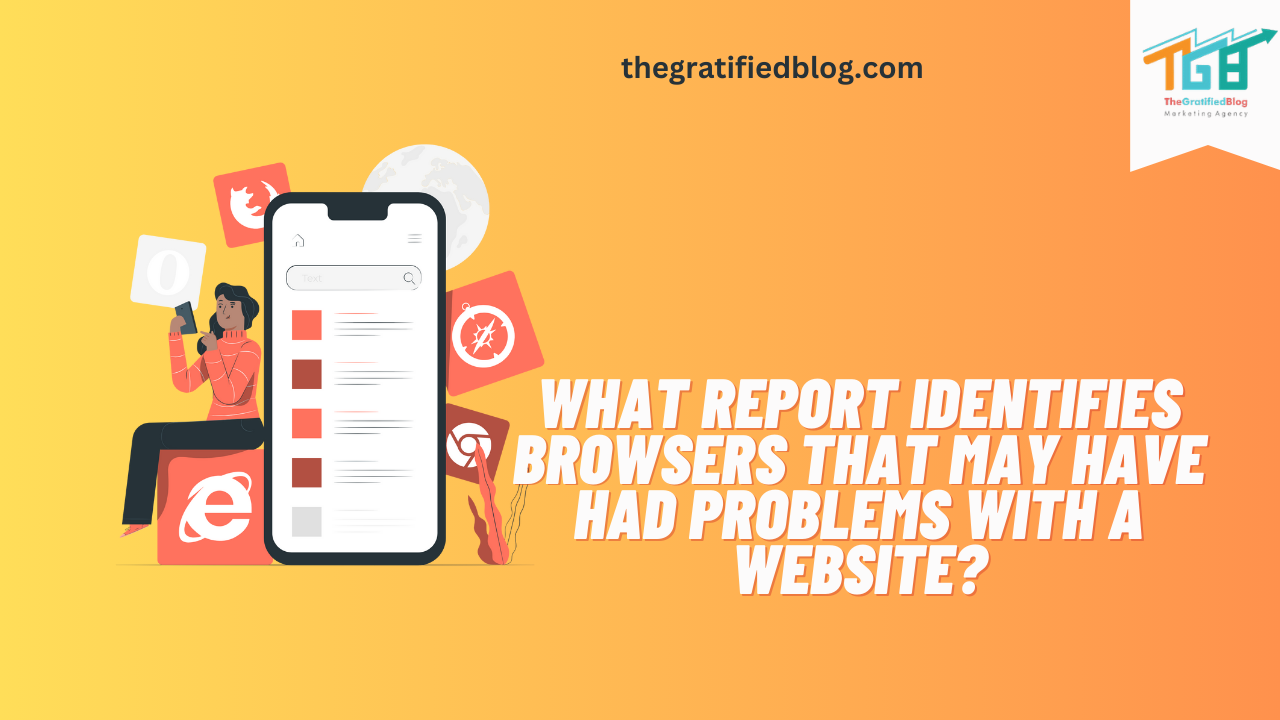
Welcome to our insightful blog where we unravel the intricacies of website development and address a crucial question: “What report identifies browsers that may have had problems with a website?” In today’s digital age, a website is often the first point of contact between a business or individual and their online audience. However, ensuring that a website functions seamlessly across various browsers is a challenge that web developers and designers face regularly.
Not all web browsers interpret code similarly, leading to potential compatibility issues. To address these concerns, web developers often rely on a valuable tool known as the “Browser Compatibility Report.”
In this article, we’ll explore what report identifies browsers that may have had problems with a website and why it’s essential.
So, let’s get started:
What Report Identifies Browsers That May Have Had Problems With A Website?
A Browser Compatibility Report is a comprehensive assessment tool that scrutinizes website performance across various browsers, such as Chrome, Firefox, Safari, and Internet Explorer.
It pinpoints inconsistencies in rendering web pages, JavaScript execution, and CSS styling. These reports ensure a consistent and user-friendly experience for all visitors, regardless of their browser preferences.
This report helps developers diagnose and rectify cross-browser compatibility issues swiftly. It streamlines debugging by revealing which browsers pose challenges, saving valuable time and resources.
It fosters user satisfaction, bolstering a website’s reputation and attracting a broader audience. The Browser Compatibility Report is an indispensable resource for web developers and designers in today’s digital landscape.
It plays a pivotal role in mitigating compatibility issues, optimizing user experiences, and enhancing the overall performance of websites across various browsers.
As the digital realm continues to evolve, this tool remains a cornerstone of web development, ensuring that websites remain accessible and functional to a diverse online audience.
Understanding Browser Compatibility
Browser compatibility refers to the ability of a website to function correctly and consistently across different web browsers, including popular ones like Google Chrome, Mozilla Firefox, Microsoft Edge, Apple Safari, and others.
Each browser has its rendering engine and interprets web code (HTML, CSS, JavaScript) differently. These differences can lead to discrepancies in how a website appears and functions, potentially causing user experience issues.
Now let’s understand by browser compatibility is important?
Why Is Browser Compatibility Important?
Wider Audience Reach
Ensuring browser compatibility is crucial to reach the broadest possible audience. Users may access your website from various devices and browsers, and a failure to function correctly on one of them could result in a lost visitor or customer.
User Experience
A website that works smoothly across different browsers enhances the user experience. Frustrated users will likely leave a site quickly if they encounter problems, potentially damaging your online reputation.
SEO Benefits
Search engines prioritize user experience, and having a website that functions well on all browsers can positively impact your search engine ranking.
Business Impact
If your website is an e-commerce platform, blog, or other online service, browser compatibility directly impacts your business’s bottom line. Lost sales and reduced engagement can result from compatibility issues.
Browser Compatibility Reports

A Browser Compatibility Report is a diagnostic tool that web developers and designers use to identify which browsers may have problems with a website. Here’s how it works:
- Testing Across Multiple Browsers: The first step is to test your website across various browsers. This can be a time-consuming process, but ensuring accurate results is essential.
- Recording Issues: During testing, developers document any issues encountered in each browser. These issues could include misaligned elements, broken functionality, or slow loading times.
- Generating The Report: After testing, the data is compiled into a Browser Compatibility Report. Various tools and software available can automate this process, making it more efficient.
- Prioritizing Fixes: The report helps developers prioritize which browser-related issues need immediate attention. Some issues may be minor and affect only a tiny portion of your audience, while others may be critical and affect a more extensive user base.
- Implementing Fixes: Once issues are identified and prioritized, developers can make the necessary changes to the website’s code to address the compatibility problems.
- Re-testing: After implementing fixes, re-testing the website across browsers is crucial to ensure the issues have been resolved.
Conclusion
A Browser Compatibility Report, a keyword that identifies browsers that may affect your website’s performance, is a valuable tool for web developers and designers to identify and address compatibility issues when users access a website through different browsers.
Ensuring that your website works consistently across all major browsers is essential for reaching a broader audience, providing an excellent user experience, and maintaining a positive online reputation.
By investing in browser compatibility testing and utilizing reports to guide improvements, businesses and individuals can ensure that their online presence remains accessible and functional to users, regardless of their chosen browser.








No Comments